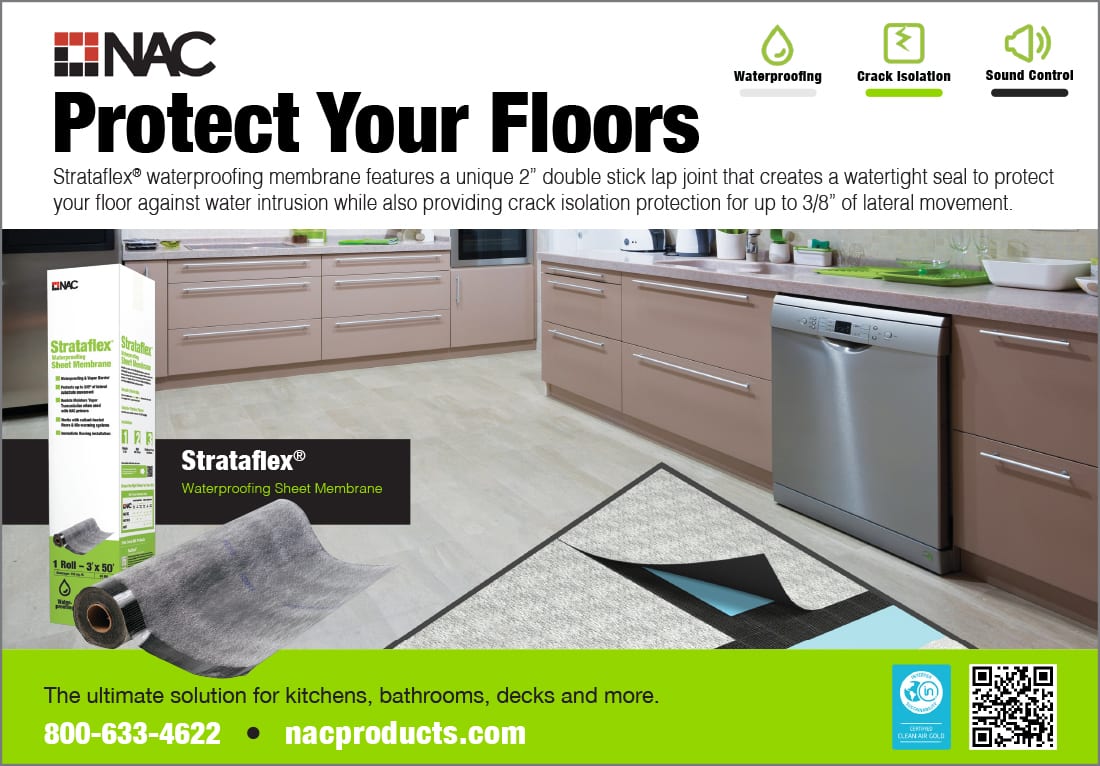Tile’s Most Wanted
Case of the Southwest Tile Killers (ep1/s1)
by Will White, director of technical communications and training, Custom Building Products
Photos courtesy of Will White/Custom

Join us for a unique series with a twist -- shocking personal looks at what happens when tile installations go bad. In this first episode, we look at a lineup of some of the usual suspects known to murder tile, and a few you may not know. While there are many, these are some of the most frequent and illustrate today’s challenges for tile installers to avoid these deadly mistakes.
Introducing the “Not so Usual” Suspects
And there I was, a happy prideful tile contractor just the day before; now at 6 a.m. on the job, on one knee feeling like I had been beaten, tricked even, wondering who came in last night and how this had come to be? Was it the electrician, the plumber, a flood, the drywall crew? Who in the world did this and how? A beautiful veined-green marble (serpentine) flooring we installed just a day ago, was murdered! Virtually every edge “curled up into the air,” black streak marks, clouded veining inside the stone; it was hollow and ugly and it did not even resemble what it was 14 hours ago. Someone has to do something about this!
The school of hard knocks as they say. More than 25 years ago, and I can still remember it like it was yesterday. Dimensional instability is what it is referred to as today. Back then, it was simply known as moisture-sensitive stone -- one of the most nefarious stone tile killers.
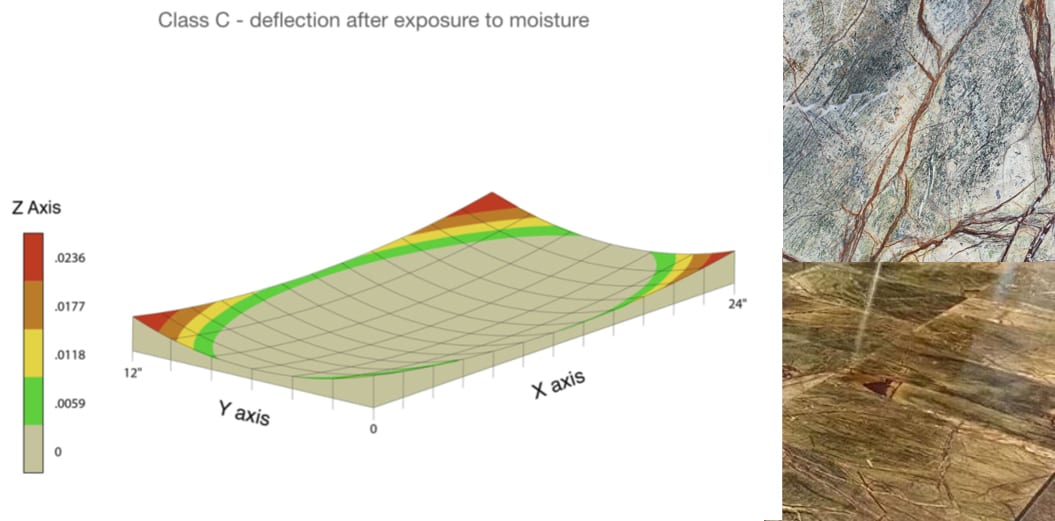
Rarely is a flooring failure related to just one specific element, cause or action. Many elements can impact tile installations -- from poor decisions and poor material choices to missing the basic methods and even to weather. Typically, it is a combination of factors that align in time and space to create conditions that result in unintended outcomes.
The fact is that temperatures across the continent are now higher and the summer season is starting earlier than ever. It is not just the Southwest U.S. experiencing some extremely high temperatures. Construction everywhere needs to be able to withstand high heat and weather fluctuations. The work force and materials are affected by weather conditions, which have always posed challenges for construction projects.
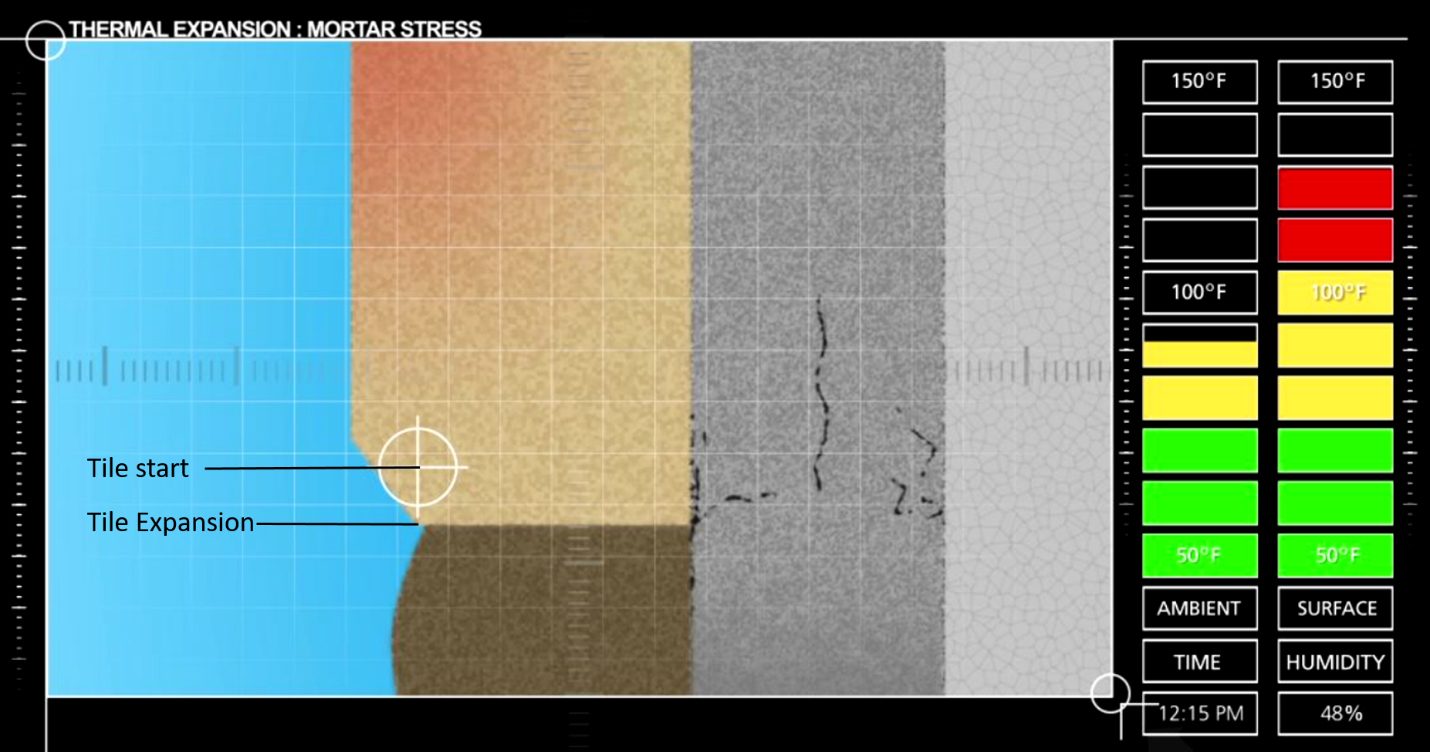
To achieve proper bond, mortar coverage, bond strengths, polymer chain and cement matrix development, most manufacturers list their recommended temperature ranges above 50° F (10° C) and below 100° F (38° C), and ideally for a range of time such as 72 hours. Rapid temperature changes can introduce thermal shock into a tile assembly, and rapidly increasing temperatures will propagate tile to expand at an increased rate -- stressing the underside of the tile where it interfaces with the bonding mortar. This shear action can promote delamination or separation between newly installed tile, mortar and substrate.
Most know when it is hot, materials will expand, and conversely when temperatures are low they will contract. Acclimatizing construction projects to combat fluctuations in weather temperatures still remains a major challenge. Most understand with higher ambient conditions cementitious bonding mortars will dry faster or have shorter working times. Installers can adjust mix water to highest allowable ratios, but still need to be aware of the ambient and surface temperatures when installing in high heat.
Recently, a string of sneaker attacks has been identified within the builder segment of the tile industry and have been dubbed “The Southwest Tile Killers.” These initially appear to be unforeseen combinations of events, conditions and choices leading to these tile installation failures.

In 2020, in the Southwest U.S., multiple houses were under construction, with happy families waiting to move into their homes and begin the next chapters of their lives. These innocent unsuspecting homeowners were “shocked” when they discovered within a short time after moving in their porcelain plank tile installations were “murdered.”
The smoking gun -- cracked grout, found in several homes, in various areas with various types of porcelain planks installed that were supplied by different manufacturers. The grouts were cement-based, but also supplied by different manufacturers and installed by different tile crews. A Task Force was assembled and the investigation began with first reports taken from multiple lots within the same development.
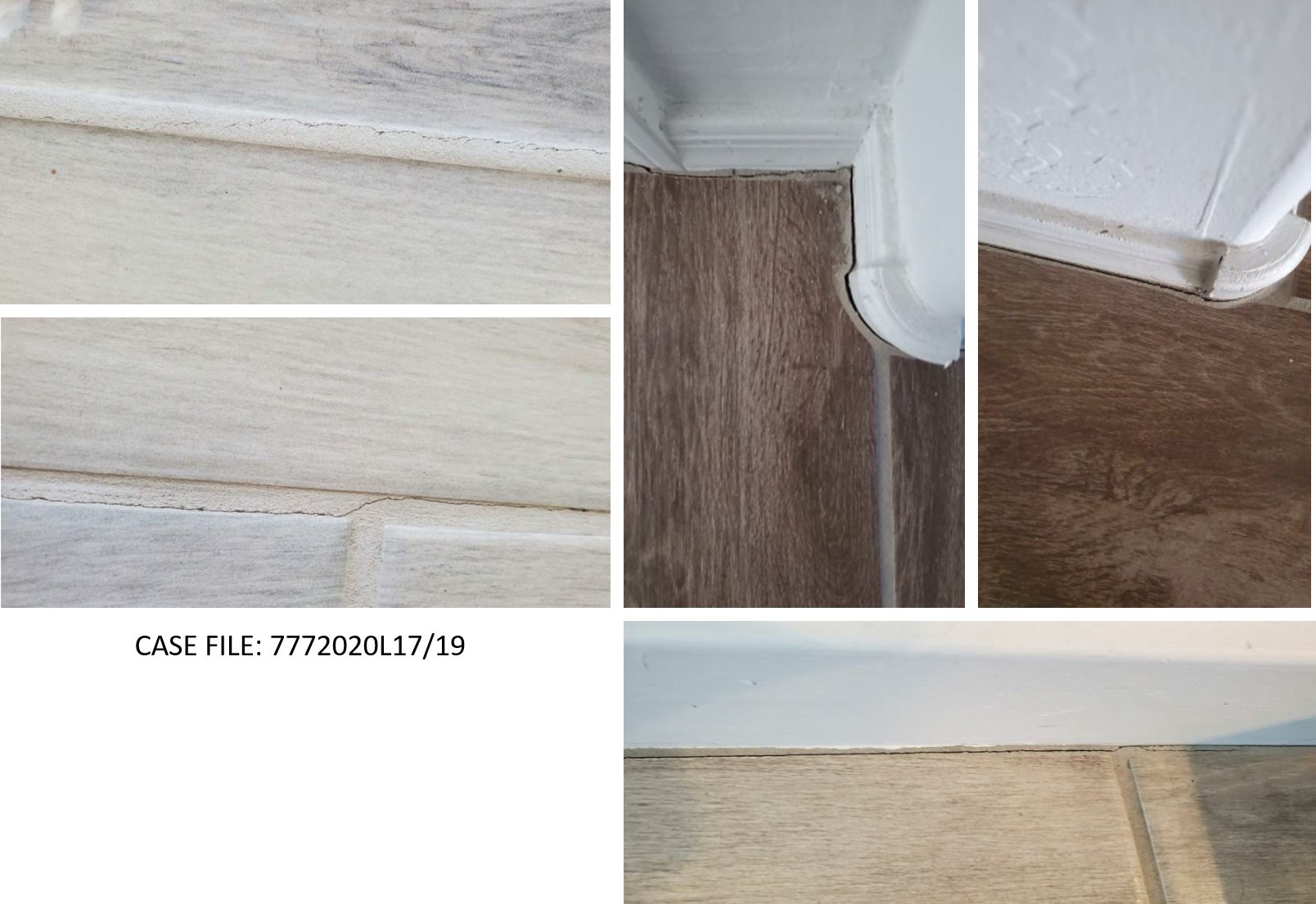
Destructive evaluation was the only means at that point to gather facts that could lead the investigators to informed conclusions. Planks were removed and the discovery began. Bonding mortar was found under planks -- that’s a good sign. However, the trowels were combed in the long direction of the tile, which is a bad sign. Trowel ridges are recommended to be combed to cross the shortest side of the tile, making it easier for the tile installer to evacuate air and gain proper transfer and mortar coverage. Every tile setter should view the best visual resource available, Trowel and Error – How to Set Tile the Right Way (see it on YouTube).
Within the very same home, non-directional trowel ridges are found and evidence of trowel swirls were seen on the concrete. This is not an industry standard method and has been found to be a common ally to most “Tile Killers.” Further analysis reveals that these plank tiles did not receive flat back troweling to fill in tile mold patterns on the back of the planks that can prevent complete mortar transfer and coverage. Note: there is mortar coverage/contact at the edges of the plank but not in the center areas.
ANSI/American National Standards Institute’s “Standard Specifications for the Installation of Ceramic Tile, A108.05 Section 2.2 Applying Dry-Set Cement Mortar, Sub-Section 2.2.2” states to comb mortar with the notched side of the trowel in one direction. Another excellent tip stated in this standard, “Clean surface thoroughly. Dampen cementitious substrates if very dry.”
In one of the grout cracking photos taken, you can clearly see the concrete (cementitious) substrate had paint overspray and potentially drywall residues that were not cleaned prior to tile installation.
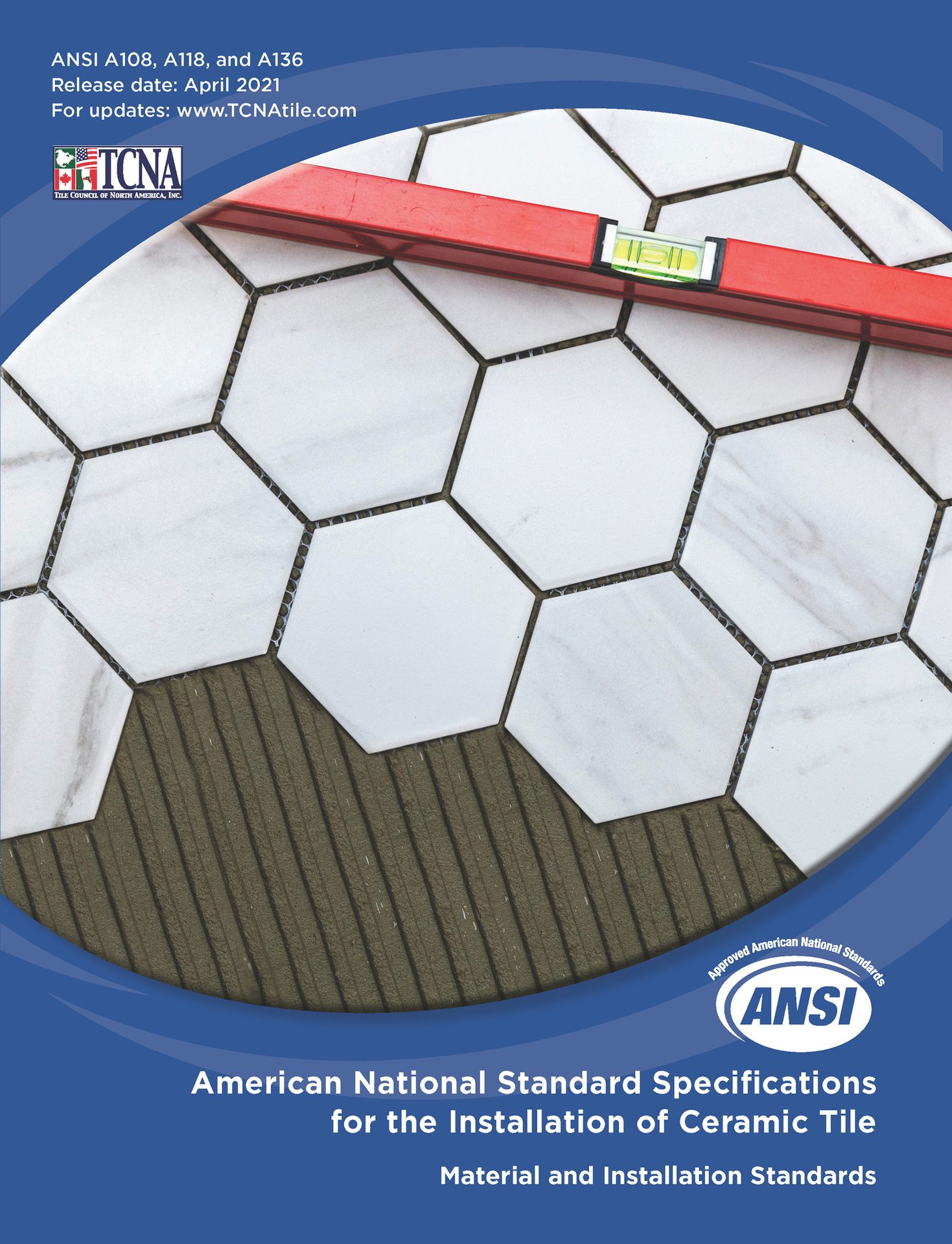
Was any surface preparation needed to achieve proper flatness requirements before this tile installation began that was “knocked off” the list before the project even started? Did the plank tiles meet the industry tolerances for “warpage” or “wedging,” and were they evaluated before the installation?
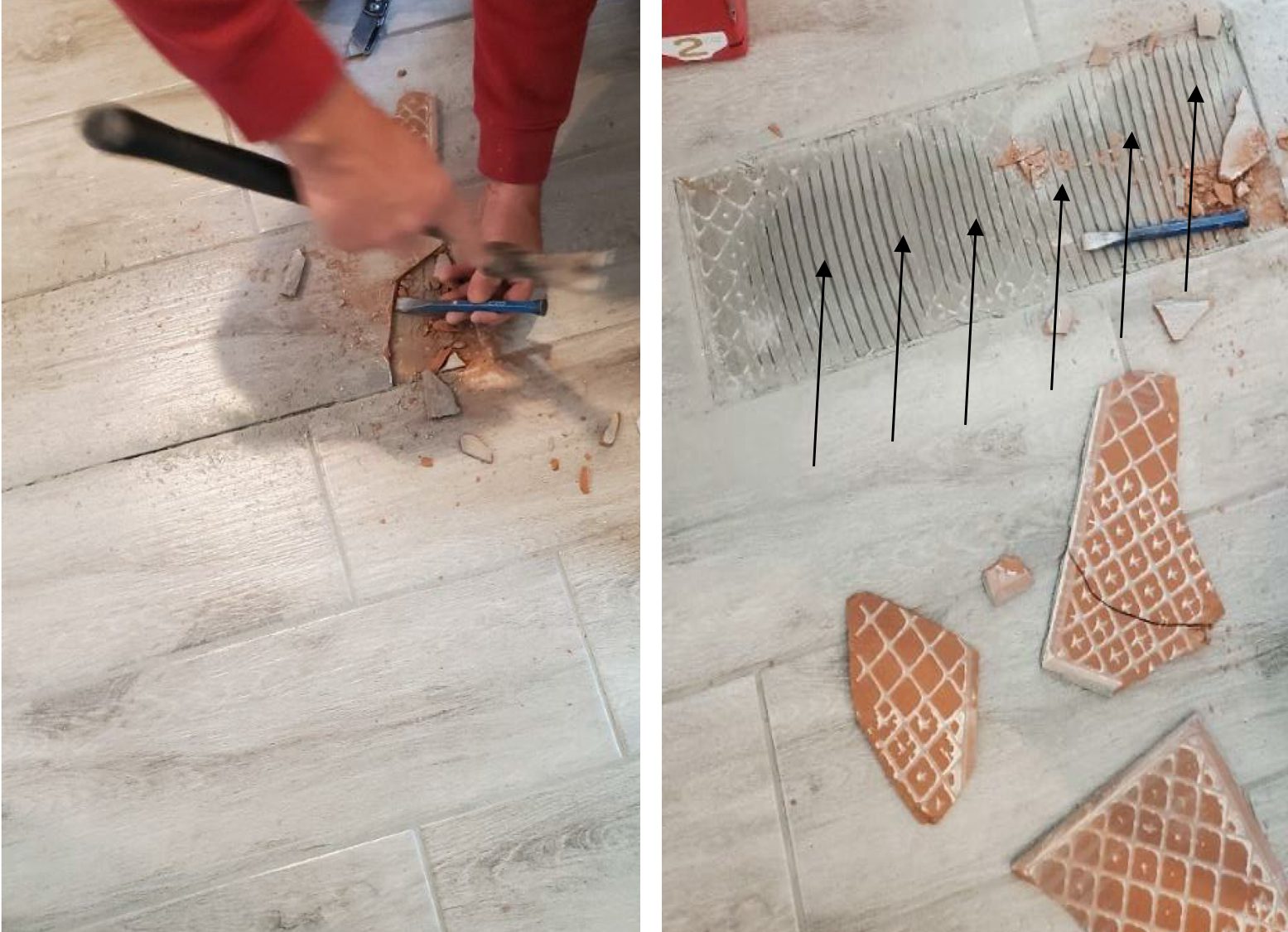
Bad mortar coverage will kill a tile installation right out of the gate. No adhesion means no support and that equals short life span. That is why ANSI standard A108.05 requires “contact area to be not less than 80%, with full support of the tile with particular attention to all corners and edges of the tile.” For exterior and interior wet applications, the “contact area shall be no less than 95%. It may be necessary to flat back trowel individual tiles with bond coat (mortar) to achieve the proper coverage.”
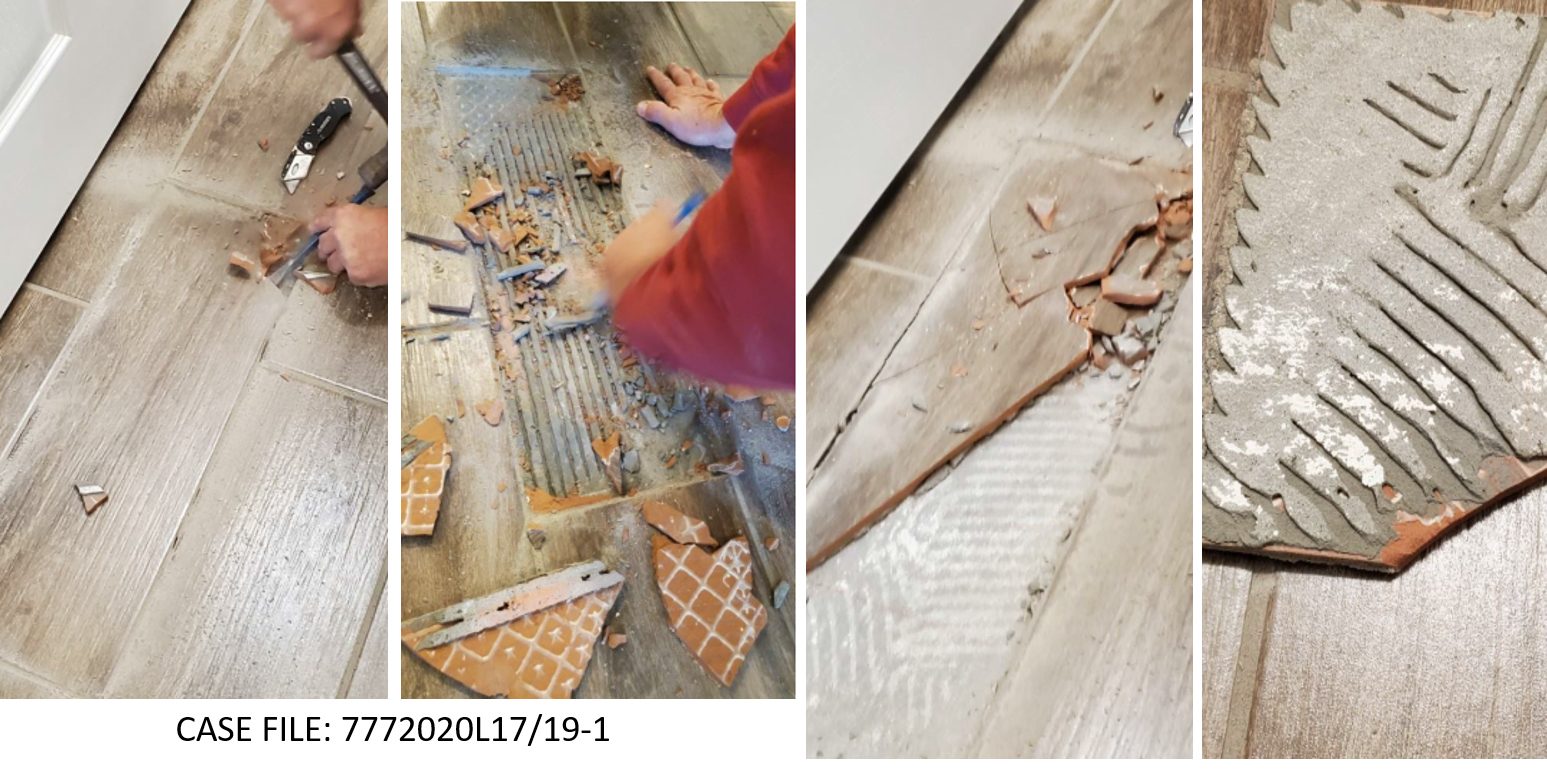
While it is not practical to specify or expect 100% mortar coverage that should certainly always be the tile installer’s goal. This investigation continues. These are only some of the facts collected, so tune in for the next episodes to get the hard cold facts that may break this one wide open.
The list of “Tile Killers” is not always well-known or understood, so these episodes are designed to bring the assailants to light and to justice! Hopefully together we can banish these tile criminals forever. Until next time.
Will White is director of technical communications and training for Custom Building Products. He is a member of the National Tile Contractors Association (NTCA), Tile Council of North America (TCNA), Materials & Methods Standards Association (MMSA) and committee member of American National Standards Institute. (ANSI).
About the Author


